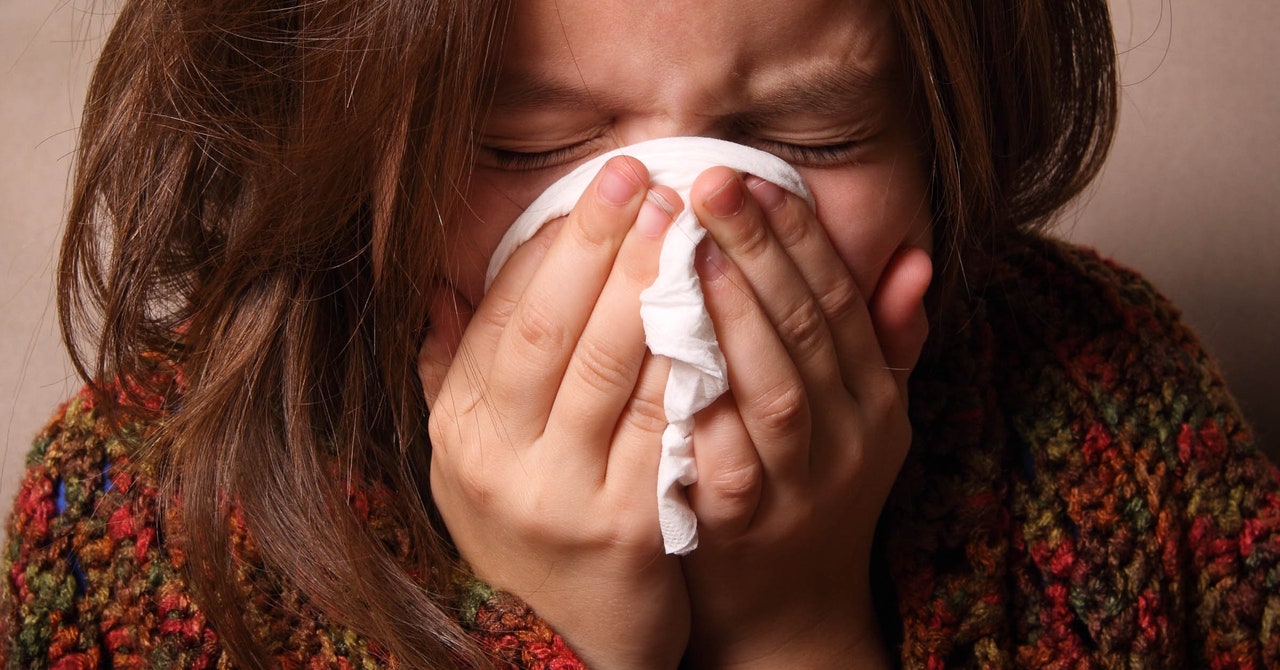
To figure out what exactly was causing this antiviral capability, the scientists then incubated the vesicles with the viruses and imaged them under a microscope. They found that the viruses got stuck to receptors on the vesicles’ surface—trapping them and rendering them incapable of infecting cells. In other words, the vesicles were acting as a kind of decoy. “Because the same receptors are on the vesicles as are on the cells, most of the viruses get bound to the vesicle and killed before they ever get to the cells,” Bleier says.
In addition, the scientists also found that the stimulated vesicles contained higher quantities of microRNA—small strands of RNA—previously known to have antiviral activity.
Finally, the scientists wanted to see how a small temperature change might affect the quality and quantity of the secreted vesicles. To create a dish-based mimic of the human nose, they used small pieces of mucosal tissue extracted from a few patients’ noses and placed those little tissues, known as explants, into cell culture. Then they lowered the temperature from 37 to 32 degrees Celsius, stimulated the tissue to upregulate TLR3, and collected the secreted vesicles.
They found that the cold caused a 42 percent drop in the tissues’ ability to secrete vesicles, and those vesicles had 77 percent fewer of the receptors that would let them bind to and neutralize a virus. “Even in that 5-degree drop for 15 minutes, it resulted in a really dramatic difference,” Amiji says.
Noam Cohen, an otorhinolaryngologist at the University of Pennsylvania, says that this work sheds light on the mechanics of how viruses spread more easily in cold weather. (Cohen was unaffiliated with this work, but previously mentored Bleier when he was a medical student.) “What this paper is demonstrating is that viruses, even though they’re incredibly simplistic, are incredibly crafty,” he says. “They’ve optimized a cooler temperature to replicate.”
Jennifer Bomberger, a microbiologist and immunologist at Dartmouth College, says that one of the study’s interesting points was how the “vesicles weren’t just immune-education,” meaning they weren’t just ferrying immune system instructions. Instead, she continues, “they were actually carrying out some of the actual antiviral effects themselves by binding to the virus.” She notes, though, that looking at mucus from patients with real infections (rather than using a virus-mimic) might provide additional insights into how these vesicles work.
The behavior of these vesicles isn’t the only reason why upper respiratory infections peak during the wintertime. Previous work has shown that colder temperatures also diminish the work of immune system antiviral molecules called interferons. Viruses also tend to spread as people move indoors. Social distancing during the pandemic has also potentially left people with less built-up immunity to the viruses that cause the flu and RSV, both part of the “tripledemic” that emerged this winter.
Still, Amiji says that understanding exactly how the vesicles change could lead to some interesting ideas for therapies—because perhaps scientists can control those changes. He visualizes it as “hacking” the vesicle “tweets.” “How can we increase the content of these antiviral mRNAs or other molecules to have a positive effect?” he asks.
In light of the Covid-19 pandemic, the team notes that there’s already a practical real-world way to help your nose defend you in cold weather: Masking. Noses can stay snug and cozy under a mask—as any glasses-wearer whose lenses have fogged from their warm breath can attest. “Wearing masks may have a dual protective role,” says Bleier. “One is certainly preventing physical inhalation of the [viral] particles, but also by maintaining local temperatures, at least at a relatively higher level than the outside environment.”
And here’s one more idea to consider: Maybe it’s just time for a vacation somewhere warm.


